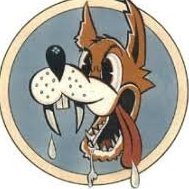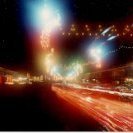Search the Community
Showing results for tags 'interceptor'.
-
Dora Wings is to release a 1/48th Curtiss-Wright CW-21 Interceptor kits - ref. DW48046 - Curtiss-Wright CW-21B Interceptor - released - ref. DW48049 - Curtiss-Wright CW-21A Demonstrator - released - ref. DW48052 - Curtiss-Wright CW-21B Interceptor Source: https://www.facebook.com/dorawingsofficial/posts/2942649705965587 3D renders V.P.
- 60 replies
-
- 14
-

-

-
- Interceptor
- Dora Wings
-
(and 1 more)
Tagged with:
-
Hi, Please find the Dora wings CW-21b. A nice little kit of a not so well known fighter. Thanks to Eugen at @dora for the replacement canopy and excellent service. Paints used: -Tamiya fine surface primer -AK faded olive drab -Gunze Dark green H-73 -Highlights Tamiya Flat green XF-5 -Tamiya Buff thinned for filter -Tamiya TS-17 Gloss aluminium (underside) -Tamiya X-22 -VMS satin coat Sorry, for it being a little picture heavy. Please also find the WIP: That’s all, thanks for watching. Regards, Rob
- 11 replies
-
- 21
-

-

-
- Dora Wings
- interceptor
-
(and 1 more)
Tagged with:
-
Hi, Started some work on the new Dora wings Curtiss interceptor. Waiting for some supplies to continue the b-17 build, so decided to try and tackle my first Dora wings kit. So far so good. Instructions ok, some photo etch and decals look fine. Am not familiar with the CW 21, but there are enough images out there on the web and the Dutch IPMS site has some good info to start with: https://www.ipms.nl/artikelen/nedmil-luchtvaart/vliegtuigen-c/vliegtuigen-c-curtiss-cw21 Have not been able to find a picture of a cockpit yet, so will follow mainly the Color references in the instructions, which appear to make sense. It will probably be a more or less straight out of the box build. Noticed a few mistakes in the instructions, but easily identified. ( They have you fit the propellor spinner to the back of the crankcase cover for instance) Would love to do an earlier NMF version as well, but this requires a different lower wing half, although the “pods” for that particular landing arrangement does appear to be present on the sprue. Perhaps for a later issue of a Chinese CW-21? Wonder if there is any record of Dutch CW-21 in a NMF with the orange triangles. Did some more work on the cockpit and added some Eduard belts instead of the supplied (unpainted) photo etch ones: Placed the decals on the instrument panel. Just a shame there are no decals for the lower console supplied. The engine is quite detailed. It just took a lot of time figuring out how to line up the parts and had to look at many references for the wright cyclone 1820. So far I am quite enjoying this build. That’s all for now. Thanks for watching. Rgds, Rob
- 25 replies
-
- 13
-

-
- interceptor
- 1/48
-
(and 1 more)
Tagged with:
-
Hi all. This is a build I finished a little while back. It's my own take on the classic UFO interceptor. After all, perhaps SHADO didn't have the resources to fend off the aliens on its own and so maybe they got some help from the US, the Brits and even the Soviets. This interceptor has two missiles on stub wings and a roof-mounted 30mm cannon. It's mostly engine and fuel so it can get into position as fast as possible. The side-mounted rotating exhausts give it VTOL capability. Back in the real world, I based the design on the Apollo CSM as I thought that maybe the USAF would have to reuse some of the original NASA hardware. The tubular body is plastic pipe, the nose was carved from a pyramid of MDF slabs and sanded into shape using 40 grade sandpaper which is basically rocks glued to paper. So it didn't take long. The engine is 22mm copper pipe and the engine bell is part of an old light fitting. Most of the other details are styrene card and the usual greeblies. The decals caused me some problems as I had nothing in the spares bin that would fit, so I downloaded some F16 1970s vintage markings along with a few others. I made a few up as well. The final set was printed on waterslide paper. The missiles are ballpoint pens with bits of sprue, while their rocket bells are wheels from a Tamiya tank kit, drilled out to resemble a bell shape. Hope you like it and all comments welcome! I enjoyed this so much I'm working on an RAF gunship from the same scenario, and after that, it will have to be a Soviet gunship, just to balance things up a bit. Cheers and happy modelling Monty
- 13 replies
-
- 36
-

-
Hi all, Whilst my university dissertation looks at me disapprovingly for continuing to make models whilst there are a wealth of research papers on the enlightening topic of geological passive margins I will write this post as a brief introduction to the build. I bought the Revell Tornado F3 kit 3 years ago and started it around that time. Due to other commitments it has been an ongoing project for far longer than I would have liked, but in that time I've learnt a lot about airbrushing and the weathering processes primarily from YouTube when I ought to have been studying! I'm considering it as my first 'advanced build' where I use complex airbrushing techniques and oil washes to make the kit look suitably weathered so any advice or criticisms is welcome. I made several mistakes in the build right the way from sanding to re-scribing, painting and weathering not that it is all entirely my fault. There are some fit issues with the kit around the engine intakes, lower rear section of the fuselage and I still have to get my head around fitting the flaps in the down position in combination with the under-wing pylons (anyone with experience please say how you did it as the dry fit highlighted a severe issue). As a result the kit is by no means perfect but only having returned to modelling recently after a long hiatus and it being my first advanced one I am overall happy with the result so far. I am sure that some of you when the kit is done will notice the inaccuracy of a Falklands War Harrier pilot shoved in the back cockpit to act as the radar operator but he has been painted as best as possible to resemble a Tornado crewman, money on the student budget for resin figures is tight afterall. The kit is nearly done but I will post some progress photos in any case. All that's left to do is fit the final parts, leave the oil wash to dry for a few weeks, seal the paintwork and wait for the PJ production figure to arrive. Having learnt from the experience of building this kit and loving the Tornado I intend to build the GR.4 'Farewell' Revell kit as a tribute to the plane of my childhood alongside all the other kits and restorations I have on the go at present. Any feedback is always welcome, enjoy the photos. All the best, M
- 10 replies
-
- 6
-

-
- Tornado F3
- RAF
-
(and 1 more)
Tagged with:
-
Mikoyan Mig-25PD Foxbat-E (48903) 1:48 ICM In an attempt to fulfil the perceived need for a supersonic interceptor that could take off, climb to height and attack an incoming bomber stream, which at the time was the most efficient method for delivering the newly invented nuclear warheads, The Mig-25 Foxbat was created. It managed the job to a certain extent, but as it never truly achieved its goals, it was left to its successor the Mig-31 Foxhound before the task was handled competently, by which time the role of ICBMs was about to make the primary role redundant. The Mig-25's inadequacies were hidden from the West however, until the famous defection of a Soviet pilot to an airfield in Japan revealed that the Foxbat wasn't as high-tech and all-conquering as we had been led to believe, having many steel parts instead of the high-tech alloys that the investigators were expecting. The prototype flew in 1964, and was constructed primarily of stainless steel, and reached service at the turn of the decade, although it had been seen before that, both in reconnaissance photos of the West, as well as at some parades. The West assumed that the large wing was to aid manoeuvrability, when in fact it was a necessity due to the aircraft's enormous weight, which made it fast, but changing direction was a chore due to all that momentum wanting to carry on in the direction it was travelling. It was also lacking in the avionics department, especially in one crucial aspect. It had no credible capability for targeting aircraft that were lower than itself, which coincided with the change in tactics to low level attack by the Western Allies, so a lack of a useful look-down/shoot-down capability was a serious deficiency. Nevertheless, several hundred were made, with the last one rolling off the production line in 1984 with a number of export orders into the bargain. The PD was the second iteration of the P interceptor, having improved engines, ability to carry R-60 missiles, and a more efficient Pulse-Doppler radar for basic look-down-shoot-down capability, which was later coupled with an infrared sensor under the nose. NATO gave it the Foxbat-E designation, which was also extended to the PDS, which were original P airframes that were later brought up to the PD standard. Although it suffered from some serious deficiencies, it held a number of speed and altitude records, and was theoretically capable of Mach 3, so could give an SR-71 a run for its money, probably at the expense of significant damage to its engines however. Attempts to improve the Foxbat were unsuccessful, and the Foxhound was its eventual replacement, and delivered everything that was expected of its forebear, staying in service until it is replaced by the Pak-Fa at some point in the near future. The Kit Since the release of the reconnaissance based RBT in Q1 and RB in Q3 of 2017, ICM are now releasing the interceptors, and we hope (well I do anyway), eventually the trainers, which relies of course on us all getting lots of the other marques, so what're you waiting for? Now the Revell/Monogram kit has been put out to pasture, we can delight in these kits from ICM that have given us a new level of detail and accuracy from the days of the Cold War when things had to be guessed at. The box is the same size and style as the other releases, although this time my review sample lid was almost destroyed due to it being such a tight fit on the box lower. I managed to get it off eventually, but it's a struggle every time. This is a revised tooling from the original, with four shared sprues and three new ones in grey styrene, the same clear sprue, and of course a different set of markings for the decal options, with the same stencils on a separate sheet. The instruction booklet is also different, and shows which parts aren't needed in this boxing, thankfully including the clear dials for the instrument panel, which I never quite understood the need for when you have a paint over it to depict the dials and the rest of the panel. Sharing much of the sprues of the original it has excellent detail, with lots of this apparent on the outer skin, as well as the new single part styrene instrument panel part that has a decal on the main sheet providing all the instrument faces. Good news! The build sequence is almost identical too, but as well as a new nose for this Interceptor (sporting the IR sensor with tracking facility), there is also the new instrument panel as mentioned above, and some slight changes to the exhausts. The biggest difference however is the inclusion of weapons! These are supplied on two of the new identical sprues, containing a quartet of R-60 Aphid Air-to-Air (A2A) missiles that can be fitted to the outer pylons for short-range fighting, and four R-40 Acrid long range A2A missiles, two of each of the Semi-Active Radar and Infrared homing varieties. These are usually fired in pairs with the Infrared missile first and the Radar missile second, to avoid confusing the former with the latter's heat signature. If the R-60s were carried on the outer rails, this reduced the Foxbat's long range capability to a one-shot deal, with only shorter range R-60 missiles left at its disposal. The Syrians claim to have shot down an Israeli F-15, but this was never confirmed for many reasons, some of which were political, some not. A US F-18 was shot down in the early part of Desert Storm by an Iraqi Mig-25, presumably not one of the ones they found buried after the fall of Saddam Hussein's regime. Markings There are four decal options included in the box, two from the Soviet Union and one each from Libya and Iraq. As mentioned earlier, the markings are on one sheet with the instrument panel decals, while the copious quantities of stencils for the airframe and missiles are on the other. Decals are printed anonymously, and have good registration, sharpness and colour density, with a thin matt carrier film cut close to the printed areas. From the box you can build one of the following: Mig-25PDS 146th Guard Fighter Regiment, Vasilikov 1989 – marked Blue 56 with 60 years celebration scroll on the intakes. Mig-25PD Soviet Air Force, 1986 – marked Red 17. Mig-25PD Iraqi Air Force, late 80s – Arabic code on the nose, Iraqi flag on the tail. Mig-25PD Libyan Air Force, 90s – Coded 6716. Conclusion It's nice to have the fighter (read interceptor) variants reaching us now, as although recce is an important task for any air force, the aircraft with the missiles and bombs are just that bit cooler to many. Another sterling effort from ICM who are now the kings of Mig-25 in 1:48. Very highly recommended. Review sample courtesy of
-
Hello, this is my second Flagon in polished NMF... Cheers!
-
All in all a nice, easy build. There are a few amateur tell tale signs (like that big paint smudge on the fin insignia) I need to neaten up. But by my standards this is pretty good, and overall i'm very happy with this Chris x
- 13 replies
-
- 18
-








